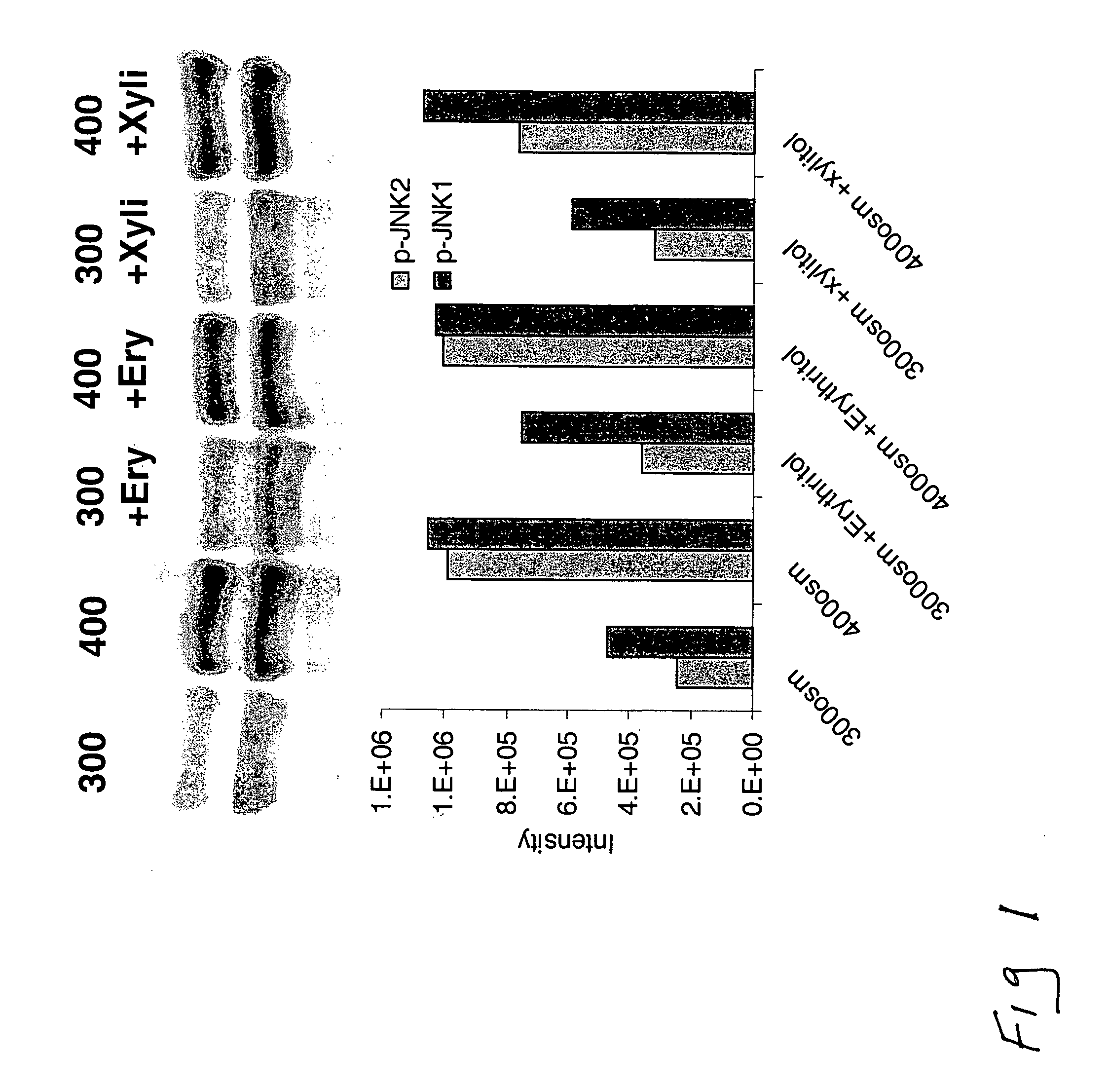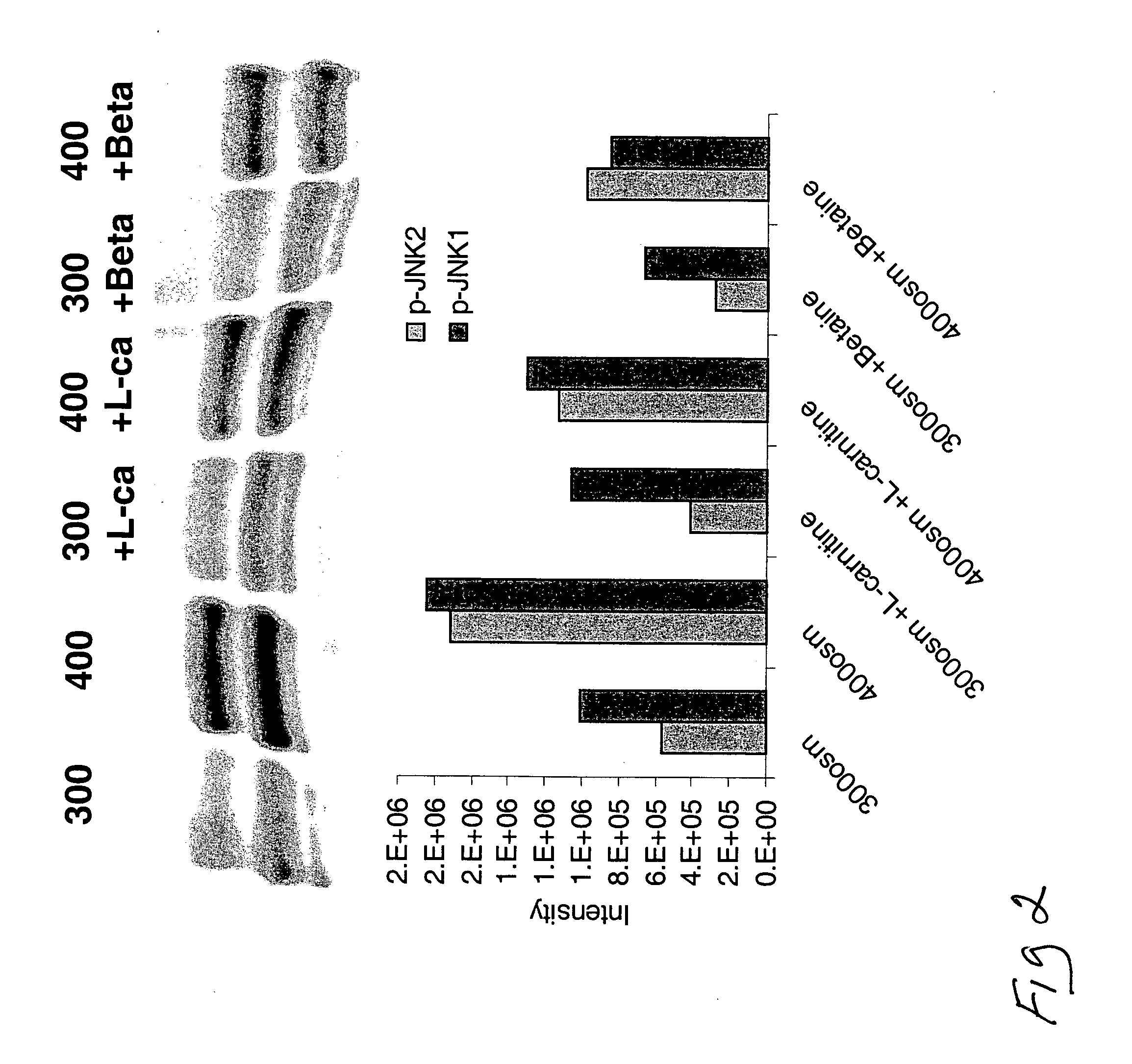Ophthalmic compositions and methods for treating eyes
a composition and eye technology, applied in the field of eye compositions and methods, can solve the problems insufficient amount of tear film, and less than desired value in lubricating eyes, etc., and achieve the effect of reducing the damaging effect of hypertonic tear film, easy and cost-effective manufacturing
- Summary
- Abstract
- Description
- Claims
- Application Information
AI Technical Summary
Benefits of technology
Problems solved by technology
Method used
Image
Examples
example 1
[0136] In this experiment, corneal epithelial cells were isolated from the rabbit eye and grown under conditions so that they differentiate into a layered “air-lift” culture that includes basal, wing, and squamous cells. As they grow and differentiate, these cultures developed tight junctions between cells that provide the basis for a trans-epithelial electrical resistance (TEER) across the cell layers between the apical and basal surfaces. The TEER value is a sensitive measure of cell growth, differentiation and health.
[0137] After 5 days in culture during which the layered structure forms, different culture wells were exposed to hypertonic fluid (400 mOsmols / kg) with or without addition of one of 6 candidate compatible solutes at a low concentration (2 mM). The TEER was then measured after 22 hours of exposure. The TEER value was expressed as a percentage of the TEER value obtained from a similar culture under isotonic (300 mOsmol / kg) conditions. The results of these tests are sh...
example 2
[0142] Phosphorylated JNK (the activated form of the stress associated protein kinase, SAPK) plays a key role in induction of inflammation and apoptosis in response to stress, including hyperosmolarity.
[0143] Human corneoscleral tissues, from donors aged 16-59 years were obtained from the Lions Eye Bank of Texas (Houston, Tex.). Corneal epithelial cells were grown from limbal explants. In brief, after carefully removing the central cornea, excess conjunctiva and iris and corneal endothelium, the limbal rim was cut into 12 equal pieces (about 2×2 mm size each). Two of these pieces were placed epithelial side up into each well of 6-well culture plates, and each explant was covered with a drop of fetal bovine serum (FBS) overnight. The explants were then cultured in SHEM medium, which was an 1:1 mixture of Dulbecco modified Eagle medium (DMEM) and Ham F-12 medium containing 5 ng / mL EGF, 5 μg / mL insulin, 5 μg / mL transferrin, 5 ng / mL sodium selenite, 0.5 μg / mL hydrocortisone, 30 ng / mL c...
example 3
[0153] In another series of experiments, the Beadlyte® Cell Signaling Assay was used. This assay is a fluorescent bead-based sandwich immunoassay. For example, each sample (10 μg / 25 μL) can be pipetted into a well of a 96-well plate and incubated with 25 μL of diluted 5× beads coupled to protein specific capture antibodies overnight. Such antibodies can specifically capture proteins, such as JNK, p38, and ERK. Overnight incubation can be utilized for the reaction of the capture beads with the proteins from the cell lysates.
[0154] The beads can be washed and mixed with biotinylated specific reporter antibodies for the proteins of interest, followed by streptavidin-phycoerythrin. The amount of total protein or phospho-protein can then be quantified by the Luminex 100™ system (Luminex, Austin, Tex.). Fifty events per bead can be read, and the data output obtained from the Bio-Plex Manager software can be exported to Microsoft Excel® for further analysis. The results can be presented a...
PUM
| Property | Measurement | Unit |
|---|---|---|
| Time | aaaaa | aaaaa |
| Molecular weight | aaaaa | aaaaa |
| Energy | aaaaa | aaaaa |
Abstract
Description
Claims
Application Information
 Login to View More
Login to View More - R&D
- Intellectual Property
- Life Sciences
- Materials
- Tech Scout
- Unparalleled Data Quality
- Higher Quality Content
- 60% Fewer Hallucinations
Browse by: Latest US Patents, China's latest patents, Technical Efficacy Thesaurus, Application Domain, Technology Topic, Popular Technical Reports.
© 2025 PatSnap. All rights reserved.Legal|Privacy policy|Modern Slavery Act Transparency Statement|Sitemap|About US| Contact US: help@patsnap.com



